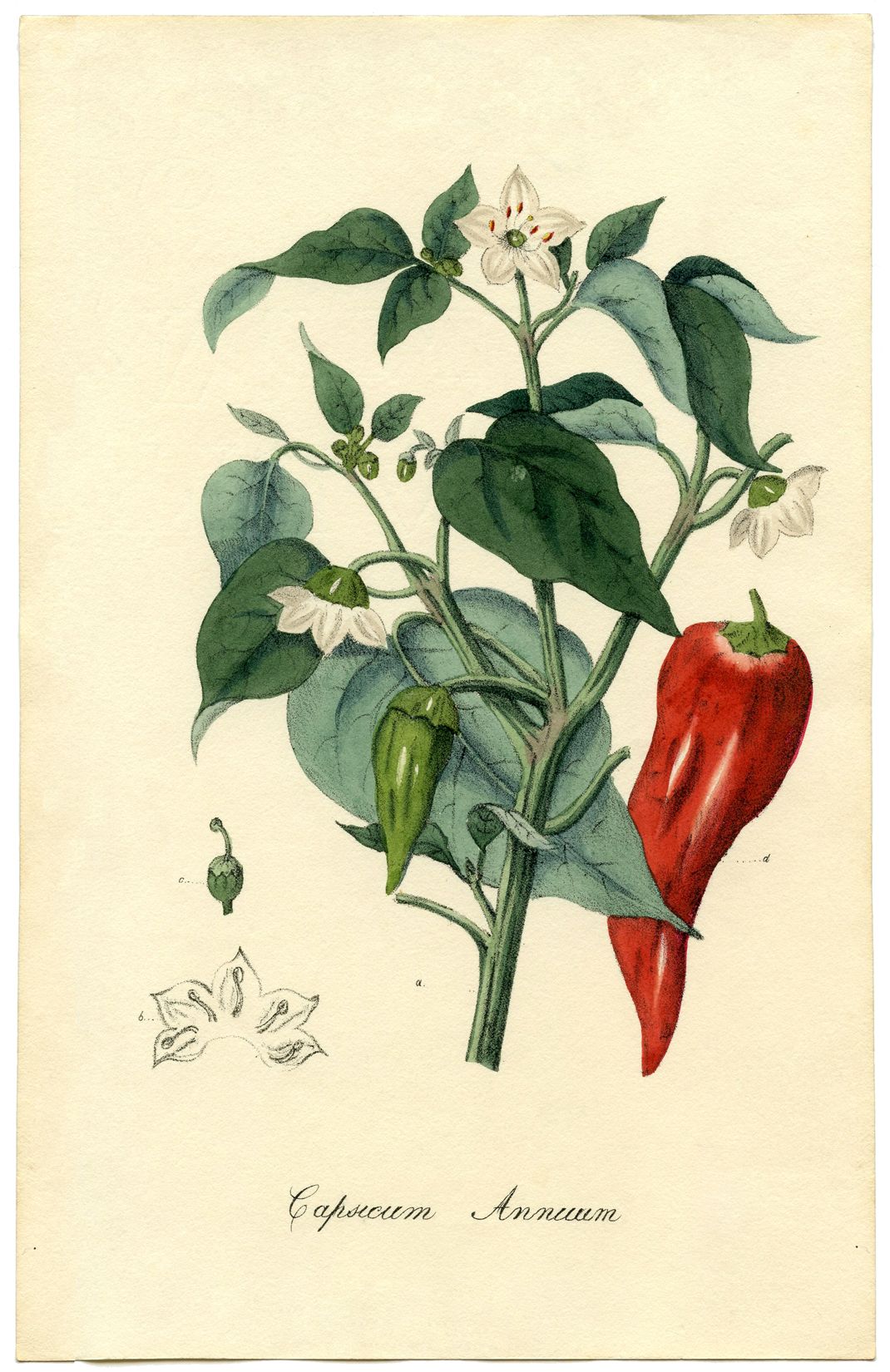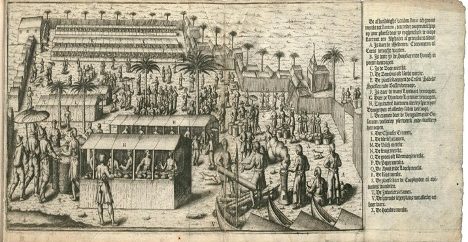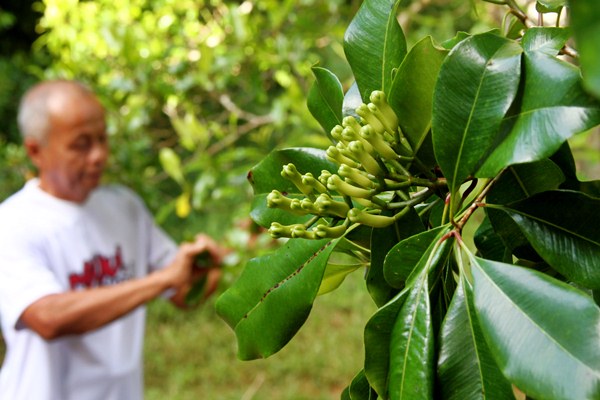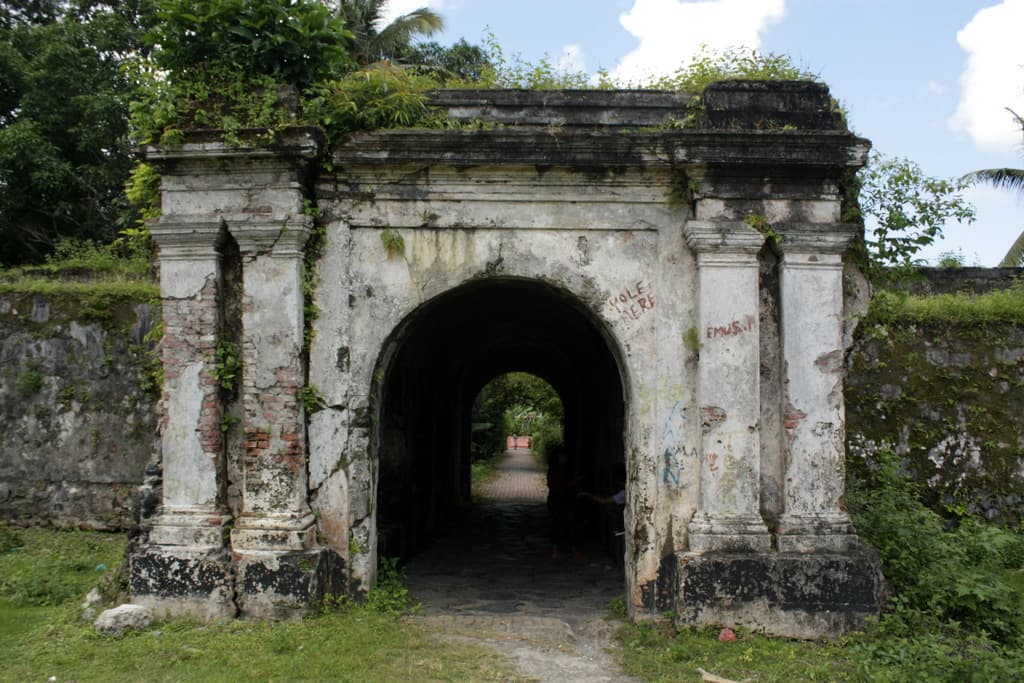
The Spice Routes shows us a path to uncover the traces of Indonesian culinary in the past. Thanks to the Spice Routes, Indonesia could establish its diverse culinary types and tastes. They still exist today and are served in many kinds of Indonesian culinary products, spread in various regions.
Sambal (chili sauce) is one of the iconic Indonesian cuisines. The majority of Indonesians adore spicy foods, so it’s not surprising that various kinds of sambal are spread almost in all parts of Indonesia. Each region even has its signature sambal. An Ancient Javanese archeologist H.I.R. Hinzler (2005) stated that in the history of Java, sambal had taken an essential place for the people since the 17th century. The reason was the cultivation of chili (Capsicum) began to develop widely in Nusantara at that time.
The Origin of Chili
Chili isn’t Indonesia’s endemic plant. This plant came from American Continent and was brought to Southeast Asia along with other around 2000 kinds of plants in the 16th century by the Portuguese and Spanish sailors. At that time, Nusantara was the global axis of the Spice Routes, where various nations sailed and came to find spice commodities, especially cloves and nutmegs.
The trade mission of the Europeans in finding spices was followed by the exchanges of sundry food commodities. Chili was one of the various kinds of intercontinental food commodities that anchored in the port cities of Nusantara and traded in the markets. The trading activity was well portrayed in the Gezicht op de Markt van Bantam (The View in the Banten Market), a painting by Cornelis Claesz in 1598. In the market, the people of Nusantara coming from different tribes mingled with other foreigners from various nations to do transactions. In his 1596 report, Willem Lodewyckz detailed the stalls of food commodities in Banten Market that sold various consumer needs, and chili was one of them.

The painting of Cornelis Claesz portrays the situation in Banten Market where the locals from various tribes mingled with other different nations to do transactions for various food commodities.
Before the chili cultivation was widespread in Nusantara, pepper commodities (Piper Nigrum) were already there, coming from India. However, when chili entered and was cultivated in Nusantara since the 16th century, the popularity of pepper as a trade commodity slowly dimmed. Although pepper was still available and used to give spicy flavor to the foods, the people of Nusantara tended to like chili more than pepper, for it was more comfortable to taste.
A report from the Resident of Padang H.J.J.L Ridder de Stuers (1850) proved the statement when he eavesdropped on a comment of people from West Sumatra about the side effect of spiciness coming from the pepper that in their opinion would give them a hot sensation in the mouth and stomach. It’s not surprising that the people of West Sumatra chose to turn into cultivating and selling chili, for it was more profitable. In its development, chili was often processed to produce various kinds of sambal as the locals’ complementary menu.
The numerous sambal variations were even recorded in the colonial cookbooks in the 19th to 20th centuries, which at that time was popular by the name sambelans. In her book Java: Facts and Fancies (1898), a Dutch writer Augusta de Wit told the story about the popularity of sambal from the Europeans’ point of view who came to Batavia around the end of the 19th century. The Europeans were excited about tasting sambal, just like her when she tasted various kinds of sambal on the small plates served on top of a long table as a part of a rijsttafel serving.
A celebrated cookbook writer from the 20th century Catenius-van Meijden even possessed the skill to make various kinds of sambal. Some of them showed up in unique names, such as sambel brandal, sambel serdadoe, sambel boedak, and sambel badjak. The unique names were based on the creation of the creator in processing the chili to create various kinds of sambal with different spicy sensations.
There are many other kinds of sambal that reflect the harmony of chili combined with other various signature ingredients in each region. We can take a look at sambal lado from West Sumatran, dabu-dabu form Manado, sambal oncom from West Java, sambal kencur from Purwokerto, sambal kluwak from East Java, and sambal matah from Bali. Since the first time chili was brought from American Continent to Nusantara by the Portuguese and Spanish by sailing through the Spice Routes, the spicy trace of chili still anchors in our kitchens and dining tables to this day!
Fadly Rahman is a teaching staff in the Department of History, Faculty of Humanities, Padjadjaran University. He is actively engaged in the history of Indonesian culinary and wrote a book; Rijsttafel: Budaya Kuliner di Indonesia Masa Kolonial (1870-1942) in 2011 and Jejak Rasa Nusantara: Sejarah Makanan Indonesia in 2016.
Text: Fadly Rahman (The Department of History & Philology of Padjadjaran University)
Editor: Tiya S
Translator: Dhiani Probhosiwi








